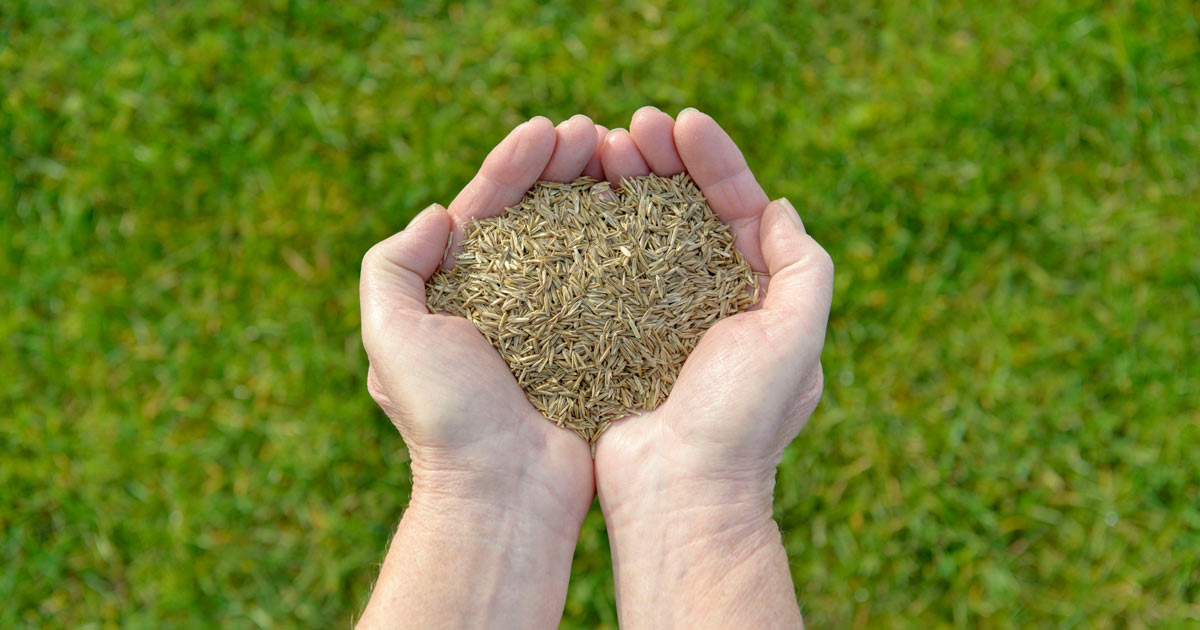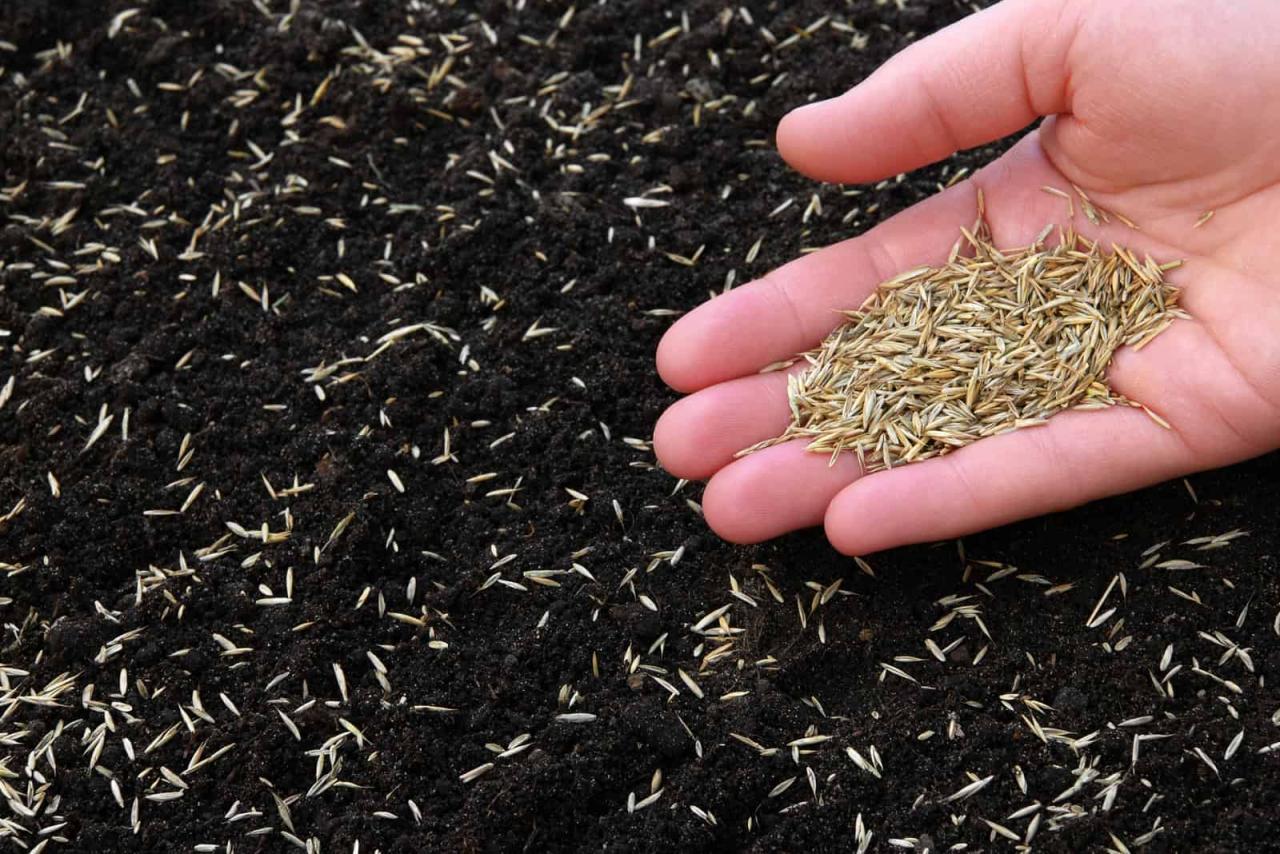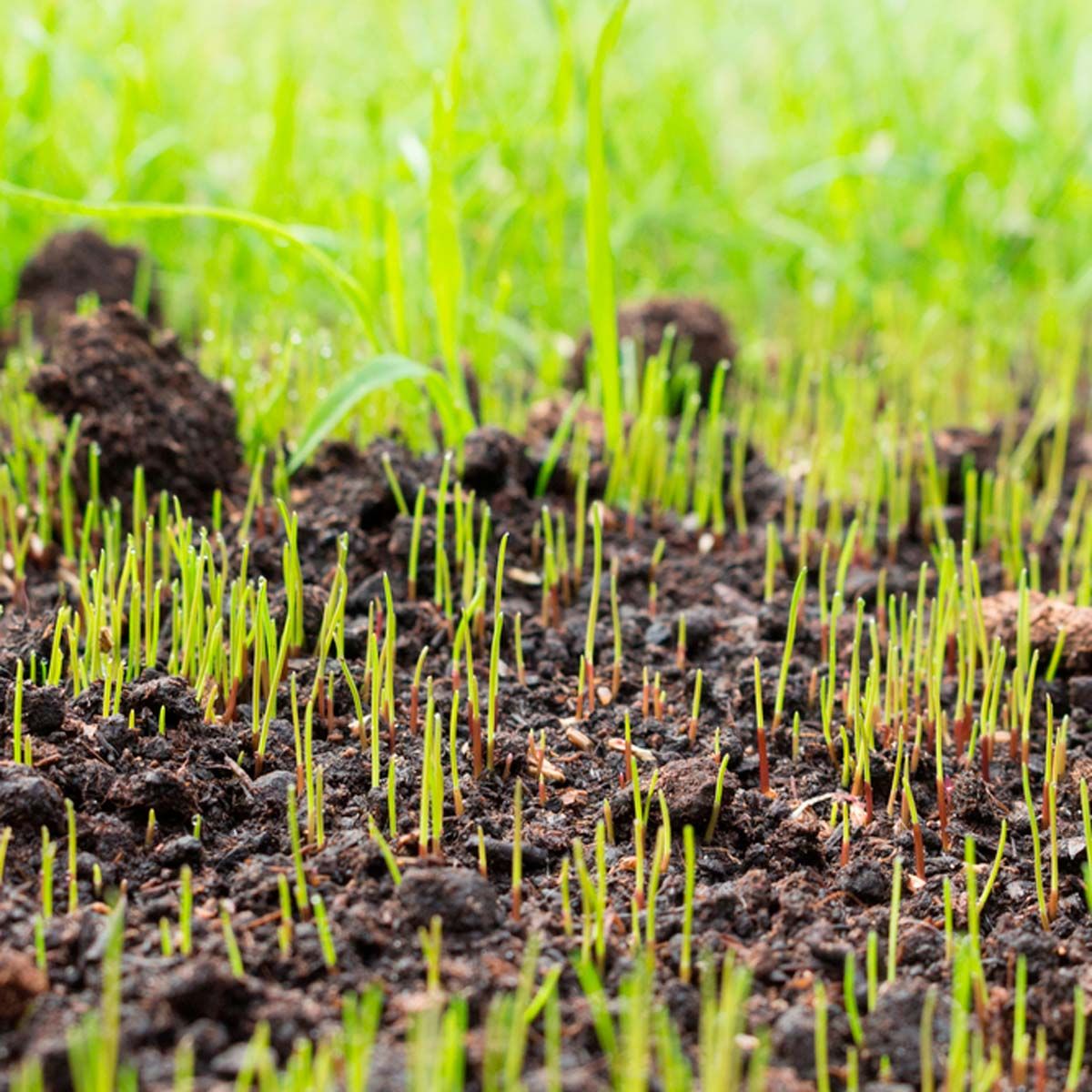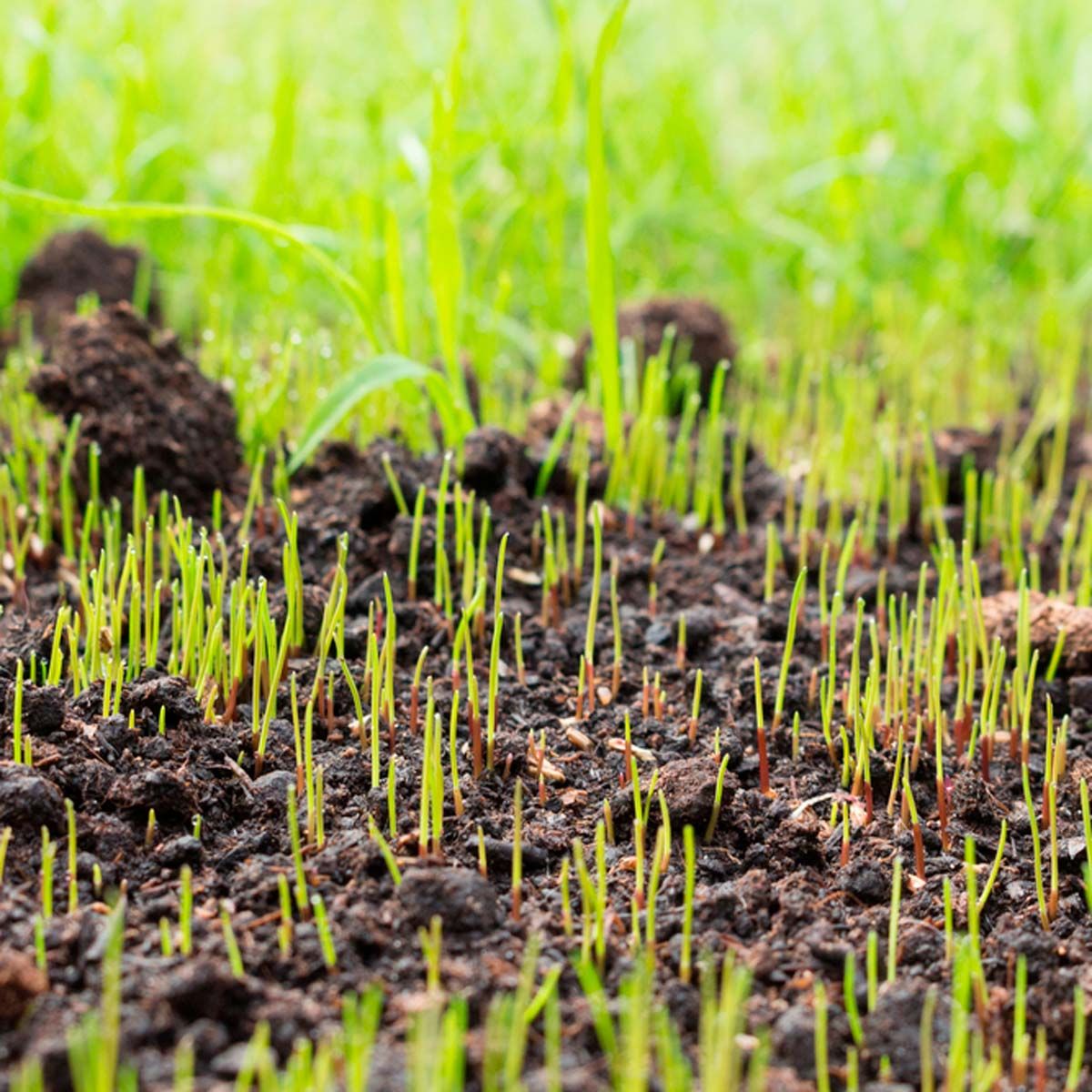How to Time Your Grass Seed Planting for Maximum Growth and Vibrancy: Tips and Tricks – Achieving a lush, vibrant lawn starts with understanding the optimal time to plant grass seed. This guide will equip you with the knowledge and techniques to maximize your chances of success, from understanding soil temperature and preparing the soil to mastering seeding techniques and providing consistent care.
The success of your lawn hinges on timing. Just like planting a garden, grass seed needs the right conditions to germinate and thrive. By understanding the ideal soil temperatures for different grass types and the nuances of planting in various seasons, you can set your lawn up for success.
This guide will walk you through the process, providing practical tips and tricks to help you achieve a lush, healthy lawn.
Understanding the Ideal Timing
Timing is crucial for successful grass seed germination and establishment. The soil temperature plays a significant role in seed germination, influencing how quickly seeds sprout and establish healthy roots.
Optimal Soil Temperatures for Grass Seed Germination
Different types of grasses have varying optimal soil temperature ranges for germination. Understanding these ranges helps determine the best time to plant grass seed for successful growth.
- Cool-season grasses, such as Kentucky bluegrass, perennial ryegrass, and fescue, thrive in cooler temperatures. They germinate best in soil temperatures between 50°F and 70°F (10°C and 21°C).
- Warm-season grasses, like Bermuda grass, zoysia grass, and St. Augustine grass, prefer warmer temperatures. They germinate optimally in soil temperatures between 70°F and 85°F (21°C and 29°C).
Best Time to Plant Grass Seed in Different Seasons
The optimal time to plant grass seed varies depending on the season and the type of grass you are planting.
- Spring: This is the ideal time to plant cool-season grasses. The soil temperatures are warming up, and the weather is generally mild, providing favorable conditions for germination and establishment.
- Summer: Warm-season grasses are best planted in the summer when soil temperatures are consistently warm. However, it is important to ensure adequate watering during the hot summer months.
- Fall: Fall is another good time to plant cool-season grasses. The soil temperatures are still warm enough for germination, and the cooler temperatures and increased rainfall promote healthy root development.
Preparing the Soil: How To Time Your Grass Seed Planting For Maximum Growth And Vibrancy: Tips And Tricks

A healthy, well-prepared soil is the foundation for a lush and vibrant lawn. Just as you wouldn’t build a house on shaky ground, you shouldn’t expect a thriving lawn from poor soil. This section will guide you through the essential steps to create the ideal environment for your grass seed to germinate and thrive.
Soil pH Testing and Adjustment
Knowing your soil’s pH level is crucial for successful grass seed planting. Most grasses thrive in a slightly acidic pH range of 6.0 to 7.0. A pH level outside this range can hinder nutrient uptake and lead to stunted growth.To test your soil pH, you can purchase a simple soil test kit from a garden center or online.
These kits typically involve collecting a soil sample, mixing it with a solution, and comparing the resulting color to a chart.If your soil pH is too acidic (below 6.0), you can raise it by adding lime. Conversely, if your soil pH is too alkaline (above 7.0), you can lower it by adding sulfur.
Timing is everything when it comes to achieving a lush, vibrant lawn, and understanding the optimal conditions for grass seed germination is key. Just like knowing the right time to harvest perilla leaves for the best flavor, as outlined in How to Make the Most of Perilla Leaf: Essential Tips for Fresh and Flavorful Cooking , planting grass seed at the right time ensures that your lawn has the best chance to thrive.
By considering factors like soil temperature, moisture levels, and potential for frost, you can maximize your chances of a successful lawn establishment.
Always follow the instructions on the product label for proper application rates.
Incorporating Organic Matter
Adding organic matter to your soil provides numerous benefits for your lawn. Compost, manure, and peat moss are excellent sources of organic matter.
- Improved Soil Structure:Organic matter helps create a loose, crumbly soil structure that allows for better air circulation and water drainage.
- Increased Water Retention:Organic matter acts like a sponge, holding onto moisture and preventing your lawn from drying out too quickly.
- Enhanced Nutrient Availability:Organic matter provides essential nutrients to your grass, promoting healthy growth.
- Reduced Compaction:Organic matter helps loosen compacted soil, making it easier for roots to grow and access nutrients.
To incorporate organic matter, spread a 2-4 inch layer over your lawn and till it into the top 6-8 inches of soil. You can also add organic matter as a topdressing after seeding.
Soil Aeration and Drainage
Proper soil aeration and drainage are crucial for healthy grass growth. Compacted soil restricts root growth, hinders water absorption, and can lead to disease problems.If your soil is compacted, you can improve aeration and drainage by using a core aerator.
This tool removes small plugs of soil, creating channels for air and water to penetrate.Poor drainage can also be a problem, especially in areas with heavy clay soil. You can improve drainage by creating raised beds or installing drainage systems.
Sowing the Seed
With the soil prepped and ready, it’s time to distribute your grass seed. This step involves choosing the right method, understanding the optimal seeding rate, and ensuring proper seed depth for successful germination.
Seeding Methods
Choosing the right seeding method depends on your specific needs and the size of your lawn. Here’s a comparison of common methods:| Method | Description | Advantages | Disadvantages ||————–|———————————————————————————————|—————————————————————————————————————————————————————————————————————————————————|————————————————————————————————————-|| Broadcast | Scattering seed evenly over the entire area.
| Simple and fast, suitable for large areas, can be used for both new lawns and overseeding.
| Can lead to uneven seed distribution, making it difficult to achieve optimal density.
|| Overseeding | Applying seed over an existing lawn to thicken it or introduce new varieties.
| Effective for filling in bare patches, introducing new grass types, and improving lawn density. | Can be challenging to distribute seed evenly, especially in thick lawns.
|| Hand Seeding | Manually distributing seed using a hand spreader or by hand.
| Provides precise control over seed placement, ideal for small areas or when targeting specific spots.
| Time-consuming and requires careful attention to ensure even distribution.
Timing is crucial for successful grass seed planting, and autumn often presents an ideal window for establishing a lush lawn. As the weather cools and the soil retains moisture, newly sown seeds have the best chance of germinating and developing strong root systems.
While you’re focusing on outdoor projects, consider adding a touch of autumnal charm to your home with a beautiful leaf garland. Craft the Perfect Autumn Leaf Garland: Easy DIY Ideas for a Warm, Inviting Home offers a step-by-step guide to create a stunning centerpiece for your fall décor.
Once your garland is complete, you can return to your lawn care routine, knowing you’ve laid the groundwork for a vibrant and healthy lawn in the coming spring.
|| Mechanical Seeding | Using a mechanical spreader or drill to distribute seed evenly and at a controlled depth.
| Offers accurate seed distribution and consistent depth, ideal for large areas or when high precision is required. | Requires specialized equipment, can be costly, and may not be suitable for all terrain types.
|
Calculating the Seeding Rate
The seeding rate refers to the amount of seed needed per square foot. The ideal rate varies depending on the type of grass, the soil conditions, and the desired lawn density.
Generally, you’ll need 2-4 pounds of seed per 1000 square feet for most grasses.
For more precise calculations, consult seed packets or contact a local lawn care professional.
Seed Depth and Soil Contact
Proper seed depth and seed-to-soil contact are crucial for successful germination. * Seed Depth:The ideal depth varies depending on the grass type, but generally, most seeds should be planted between 1/4 to 1/2 inch deep.
Seed-to-Soil Contact
Seeds need to be in direct contact with the soil for moisture absorption and root development.
Watering and Maintenance
The initial weeks after seeding are crucial for establishing a healthy lawn. Consistent watering is paramount to ensure the seeds germinate, develop roots, and grow into a vibrant, lush lawn.
Watering Frequency and Duration
Watering frequency and duration depend on the grass type, climate, and soil conditions.
Grass Type |
Watering Frequency |
Watering Duration |
|---|---|---|
Kentucky Bluegrass |
1-2 times per day (morning and evening) |
15-20 minutes |
Fescues (Fine, Tall, and Creeping) |
1-2 times per day (morning and evening) |
15-20 minutes |
Perennial Ryegrass |
1-2 times per day (morning and evening) |
15-20 minutes |
Bermuda Grass |
1-2 times per day (morning and evening) |
10-15 minutes |
Zoysia Grass |
1-2 times per week |
15-20 minutes |
Mowing and Fertilizing New Grass
Mowing and fertilizing play a significant role in promoting healthy growth and a vibrant lawn.
- Mowing:Once the grass reaches a height of 3-4 inches, it’s time to mow. Set the mower blades to a height of 2-3 inches, removing no more than one-third of the grass blade at a time.
- Fertilizing:Use a starter fertilizer specifically designed for new lawns. This provides essential nutrients to help the grass establish a strong root system. Apply fertilizer according to the product’s instructions.
Preventing Weeds and Pests, How to Time Your Grass Seed Planting for Maximum Growth and Vibrancy: Tips and Tricks
Weeds and pests can hinder the growth of new grass. Here are some tips to keep them at bay:
- Weed Control:Pre-emergent herbicides applied before seeding can prevent weeds from germinating. Post-emergent herbicides can be used to control weeds that have already sprouted.
- Pest Control:Inspect your lawn regularly for signs of pests, such as grubs, chinch bugs, and armyworms. Apply appropriate insecticides according to the product’s instructions.
Factors Influencing Timing

The ideal time to plant grass seed varies significantly depending on a variety of factors, primarily the region’s climate and soil conditions. Understanding these factors is crucial for ensuring successful germination and establishing a healthy lawn.
Regional Variations in Climate and Soil Conditions
Regional variations in climate and soil conditions play a significant role in determining the best time to plant grass seed.
- Temperature: Grass seeds require a specific temperature range for germination and growth. Warmer climates with longer growing seasons generally have a wider planting window, while colder climates with shorter growing seasons have a more limited window.
- Rainfall: Adequate moisture is essential for seed germination and establishment. Regions with consistent rainfall may have more flexibility in planting times, while drier regions may need to rely on irrigation.
- Soil Type: Different soil types have varying drainage characteristics and nutrient levels. Sandy soils tend to drain quickly, requiring more frequent watering, while clay soils retain moisture for longer periods.
Local Weather Patterns
Local weather patterns can significantly impact the success of grass seed planting.
- Frost: Planting grass seed in areas prone to frost can lead to seed damage or failure to germinate. It’s crucial to wait until the threat of frost has passed before planting.
- Drought: Periods of drought can make it challenging to establish a new lawn, as seeds may struggle to germinate and young seedlings may not have enough moisture to survive.
- Heavy Rain: Excessive rainfall can wash away seeds or create waterlogged conditions, inhibiting germination.
Challenges of Planting in Different Seasons
Planting grass seed in different seasons presents unique challenges.
- Spring: Spring offers ideal temperatures and rainfall for germination, but it can also be a time of unpredictable weather, including late frosts.
- Summer: Summer temperatures can be too hot for seed germination, and watering needs are high.
- Fall: Fall is often considered the best time to plant grass seed in many regions, as temperatures are cooler and rainfall is more frequent. However, it’s essential to plant early enough to allow for establishment before winter.
- Winter: Planting grass seed in winter is typically not recommended, as cold temperatures and limited sunlight can inhibit germination.
Troubleshooting and Tips

Even with careful planning, challenges can arise when planting grass seed. Understanding common issues and how to address them can make a significant difference in the success of your lawn.
Uneven Germination
Uneven germination can be frustrating, leaving patches of bare ground in your lawn. This often occurs due to inconsistent seed distribution, inadequate soil preparation, or unfavorable weather conditions.
- Ensure even seed distribution: Use a seed spreader for consistent coverage.
- Address soil compaction: Aerate the soil to improve drainage and allow for better root growth.
- Water consistently: Keep the soil moist, but not soggy, during the germination period.
- Reseed bare patches: If some areas remain bare after initial germination, lightly rake the soil and reseed those spots.
Slow Growth
Slow growth can be attributed to various factors, including poor soil quality, insufficient sunlight, or inadequate watering.
- Improve soil fertility: Conduct a soil test to identify nutrient deficiencies and amend the soil accordingly.
- Ensure adequate sunlight: Grass needs at least six hours of sunlight daily.
- Water deeply and infrequently: Encourage deep root growth by watering thoroughly but less frequently.
- Consider overseeding: Overseeding with a blend of fast-growing grass varieties can help fill in gaps and improve overall lawn density.
Patience and Consistent Care
A healthy lawn takes time and consistent care. Be patient and follow a regular watering and maintenance schedule.
- Mow regularly: Maintain a consistent mowing height and avoid scalping the lawn.
- Fertilize appropriately: Follow a fertilization schedule tailored to your grass type and climate.
- Control weeds: Address weeds promptly to prevent them from competing with your grass.
- Protect your lawn from pests: Be vigilant for pests and take appropriate measures to control them.
Last Recap
Timing your grass seed planting is a crucial step in achieving a vibrant lawn. By understanding the ideal soil temperatures, preparing the soil properly, and providing consistent care, you can maximize your chances of success. With the right approach, you can enjoy a beautiful, healthy lawn that will be the envy of your neighborhood.
Frequently Asked Questions
What are the best types of grass seed for different climates?
The best type of grass seed depends on your climate. For example, cool-season grasses like Kentucky bluegrass and fescue thrive in cooler climates, while warm-season grasses like Bermuda and Zoysia are better suited for warmer regions. A local nursery or landscaping professional can provide recommendations based on your specific climate.
How long does it take for grass seed to germinate?
Germination time for grass seed can vary depending on the type of grass and environmental conditions. Generally, it takes 7 to 14 days for grass seed to germinate. However, it can take up to 30 days in cooler temperatures or if the soil is too dry.
What are the signs of a healthy lawn?
A healthy lawn is lush, green, and free of weeds and pests. It should also have a uniform height and texture. If you notice any brown patches, thinning areas, or an abundance of weeds, it’s a sign that your lawn may need some attention.
